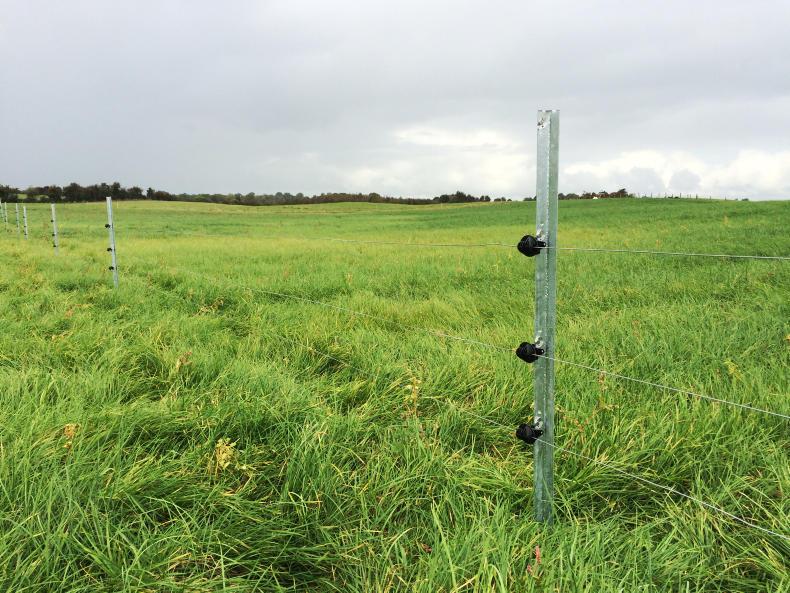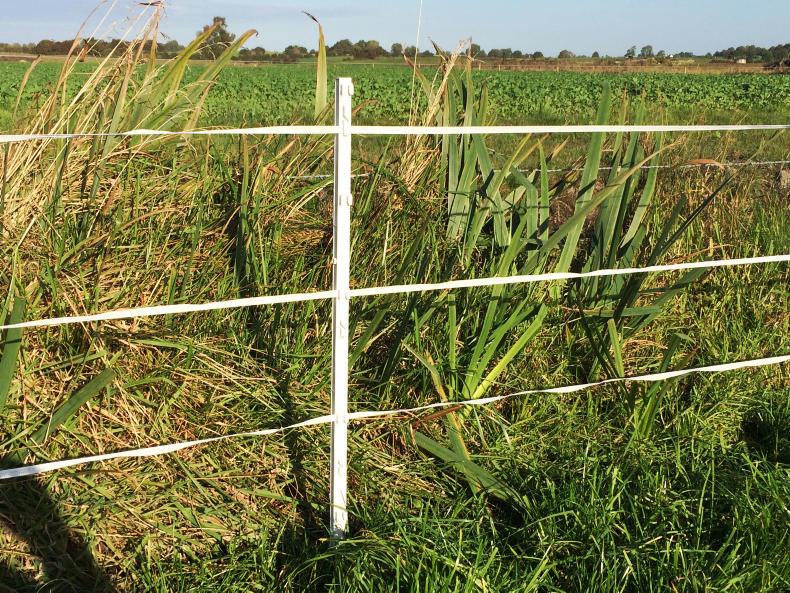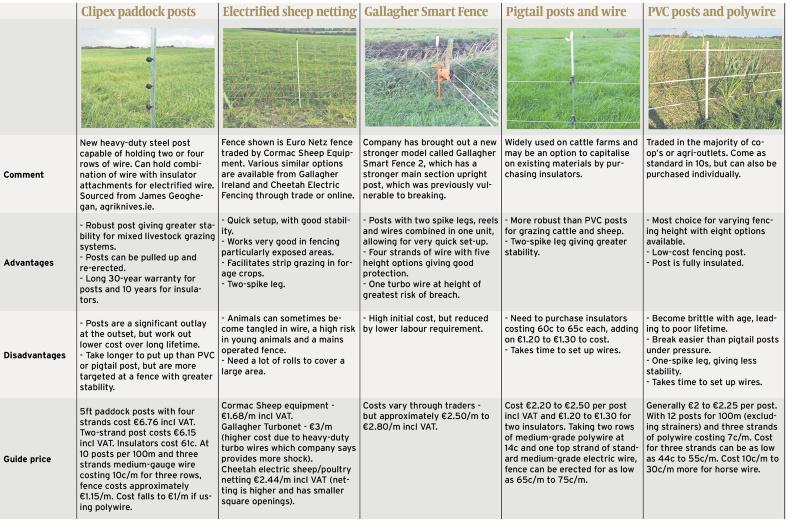
LOYALTY CODE:
The paper code cannot be redeemed when browsing in private/incognito mode. Please go to a normal browser window and enter the code there

LOYALTY CODE:
The paper code cannot be redeemed when browsing in private/incognito mode. Please go to a normal browser window and enter the code there
This content is copyright protected!
However, if you would like to share the information in this article, you may use the headline, summary and link below:
Title: Temporary sheep fencing – grazing surplus grass and forage crops
Sheep fencing doesn't need to cost a fortune with plenty of options now on the market allowing fencing to be set-up quickly.
https://www.farmersjournal.ie/temporary-sheep-fencing-grazing-surplus-grass-and-forage-crops-231274

ENTER YOUR LOYALTY CODE:
The reader loyalty code gives you full access to the site from when you enter it until the following Wednesday at 9pm. Find your unique code on the back page of Irish Country Living every week.

CODE ACCEPTED

You have full access to farmersjournal.ie on this browser until 9pm next Wednesday. Thank you for buying the paper and using the code.

CODE NOT VALID
Please try again or contact us.
For assistance, call 01 4199525
or email subs@farmersjournal.ie
Sign in

Incorrect details
Please try again or reset password
If would like to speak to a member of
our team, please call us on 01-4199525
Reset
password
Please enter your email address and we
will send you a link to reset your password

If would like to speak to a member of
our team, please call us on 01-4199525
Link sent to
your email
address
![]()
We have sent an email to your address.
Please click on the link in this email to reset
your password. If you can't find it in your inbox,
please check your spam folder. If you can't
find the email, please call us on 01-4199525.
![]()
Email address
not recognised
There is no subscription associated with this email
address. To read our subscriber-only content.
please subscribe or use the reader loyalty code.
If would like to speak to a member of
our team, please call us on 01-4199525
 This is a subscriber-only article
This is a subscriber-only article
Update Success !





There is renewed interest in temporary grazing agreements with good grass reserves on some beef farms and an increase in the volume of forage crops grown. The allowance to graze forage crops sown under GLAS after 1 December is also adding to interest as is strong factory activity in enticing farmers to feed lambs for next spring.
A barrier on some farms to purchasing sheep or operating a temporary grazing arrangement is inadequate fencing.
However, there is scope on all farms to install temporary fencing at a low cost that will facilitate grazing of these swards. For some farmers, offering the grass to a sheep farmer who has the means to set up their own temporary fencing is a more logical step.
The table below gives a sample of some of the temporary electric fencing options currently available to farmers.
It also gives a rough guide price, but it is important to note that the cost can vary significantly depending on the specification of materials used.
Combining temporary and permanent fences
For many, there will be scope to combine temporary fencing with a permanent fence that is already in place. This can be done at a very low cost, ranging from 20c/m to 30c/m, by erecting two strands of wire and nailed/screw-in insulators on existing posts.
Some farmers may also wish to use the opportunity to erect a new permanent wire fence that will be used after to graze cattle or livestock in a mixed grazing system.
Contractors will charge €0.90/m to €1.20/m, including materials, to erect a fence on relatively level ground.

Electrified sheep netting is quick to erect and comes in roll lengths of 50m.
The higher cost is for long-life posts (PDM/creosote/Clipex), heavier strainers and high-tensile wire and is highly advised for a long-life fencing job.
Erecting two strands of wire costs in the region of €1.20/m to €1.50/m.
Options when purchasing an electric fence
Erecting a fence is only one part of the task. A critical component of maintaining a stock-proof fence is having a fence with a good output. Once animals become accustomed to an electric fence, there are generally few issues, but it is important that the correct output is achieved at the outset.
There are a number of options in purchasing a fence. The most common are a battery or mains-operated fence, but there are also now fences on the market that can work on either mains or battery, providing better options for fragmented lands, as well as solar fences that also have a back-up battery facility.

Using horse wire will make the fence more visually and can be useful in derterring sheep that are not accustomed to electric fencing.
Costs for battery fences start at €100 to €130 for lower-output nine-volt fences, rising to €200 to €300 for stronger fences and solar units capable of covering 2km or five acres.
Mains fencers, where they can be used, vary significantly in price depending on output. Entry units with an output 0f 0.5 to 0.8 joules and covering two to five acres range from €100 to €150. Stronger four to five joule units suitable for fencing 40 to 60 acres cost €250 to €300, with standard six to seven joule units costing €300 to €400. More complex units capable of recording and altering output and high-output units covering 150 to 200 acres can cost €1,000 or more.
Getting a mains connection on an out-farm
Where the fence will be used long term, there is potential to get a mains connection from the ESB on farms that have a low voltage power line coming from a transformer running through their lands.
A small structure to house a meter and the mains fencer outside is required.
The ESB will facilitate this connection if you send in an unmetered application form to the ESB’s Portlaoise hub. When the ESB receives your application, it will send a technician out to assess the site and set a cost. An unmetered connection with a low current that will only service a mains fencer will cost around €7 to €10 per month standing charge. In general, the cost of putting in an unmetered connection suitable for just a mains fencer is:
 Click here for full-size table
Click here for full-size table
Options for grazing surplus grass and catch crops
SHARING OPTIONS: